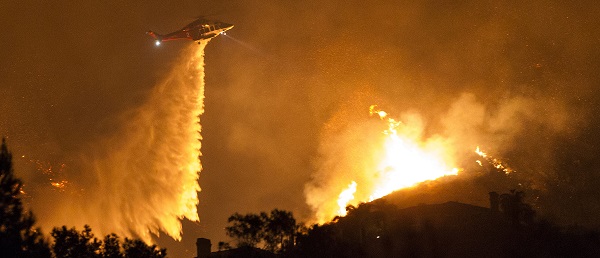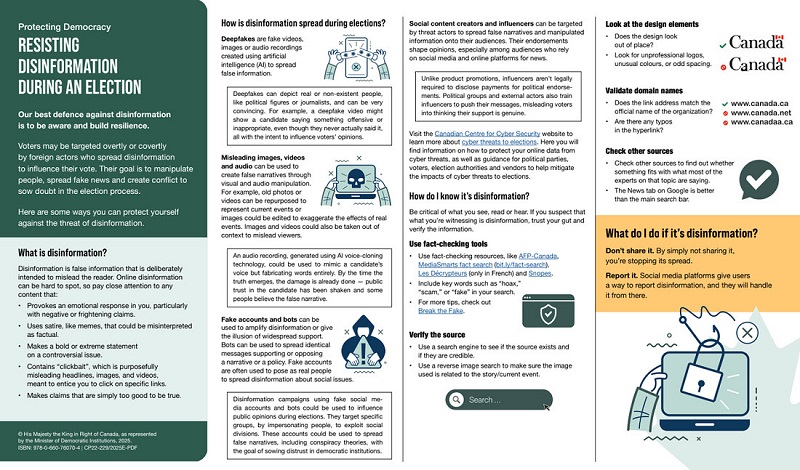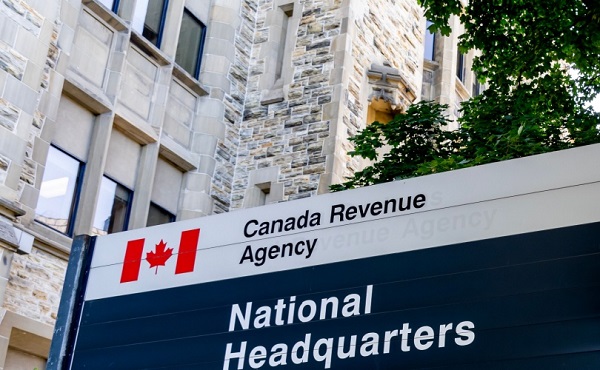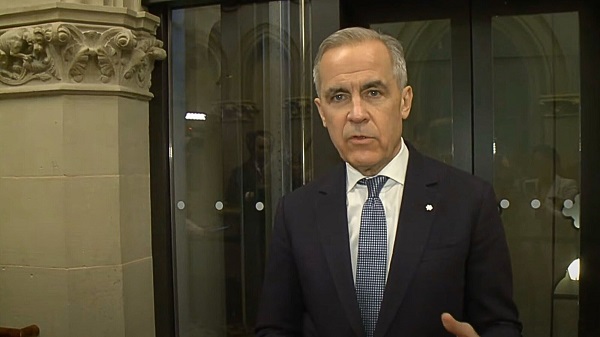Daily Caller
‘Excuses Go Up In Flames’: California Dems Paved The Way For Los Angeles To Be Consumed By ‘The Big One’


From the Daily Caller News Foundation
By Nick Pope
Southern California was known for years to be vulnerable to potentially devastating wildfires, but Democratic officials did not take sufficient action before proceeding to botch the response to fires currently devastating the Los Angeles area.
Democratic California Gov. Gavin Newsom failed to follow through on a signature 2019 initiative to revamp the state’s approach to wildfires and neglected to adequately manage wildfire kindling while a key reservoir reportedly sat empty in the lead-up to the fires that have rocked Southern California this week. While there is nuance to these shortcomings, the results of the crisis makes clear that California’s top officials failed to effectively handle a predictable and dire emergency, according to emergency management and policy experts.
“We saw this coming, and we have said, ‘I told you so’ every time there’s been a super fire. This time, the super fire happens to be even more catastrophic, because it’s happening in one of the most densely-populated areas in the United States,” Edward Ring, director of water and energy policy for the California Policy Center, told the Daily Caller News Foundation. “It’s the same message, which is that we have neglected our water infrastructure. We have mismanaged our forests and chaparral in the name of environmentalism, and we’re paying the price.”
“Anybody who says this is being politicized should be ashamed of themselves, because every time this happened in the past, the people defending the policies blamed it on climate change, which is a completely politicized issue,” Ring added. “And instead of making the hard decisions that might challenge environmentalist priorities, they did things like outlawing gasoline engines and mandating electric cars. Things like that have nothing to do with land management, they have absolutely nothing to do with the actual problem that needs to be solved.”
Ring said that inadequate use of prescribed burns and the regulation-induced decline of timbering in California have increased the density of vegetation available to fuel fires, making “the whole state a tinderbox.”
Republican Montana Sen. Tim Sheehy, who has fought wildfires in the past, also said in a Wednesday Fox News interview that “the big one” was foreseeable, adding that the devastation unfolding in Southern California is largely attributable to government mismanagement of the emergency. Some forecasts, including those issued by the National Interagency Fire Center and the California Office for Emergency Services, warned that Southern California was at high risk for serious fires in January before the fires began ravaging Los Angeles.
Joe Rogan also recounted in July 2024 that a Southern California firefighter once told him that the area had been fortunate to avoid a massive fire emergency, but that the region’s luck would run out one day when the conditions were right for a devastating blaze that could threaten the entire city.
Newsom launched a $1 billion executive order in 2019 to bolster the state’s preparedness and resiliency for wildfires. However, a 2021 investigation by CapRadio — a California-focused National Public Radio outlet — concluded that Newsom’s administration was falling short on some key facets of the program while embellishing its success publicly. Specifically, the report found that “Newsom overstated, by an astounding 690%, the number of acres treated with fuel breaks and prescribed burns” in forestry projects identified as critical for wildfire preparedness.
The 2019 executive action was taken in response to the Camp Fire of 2018, a massive fire started by downed power equipment that ravaged Northern California and killed 84 people. In response to that fire and others, news outlets and subject matter experts repeatedly pointed out that California’s lax approach to forest management creates danger by allowing fire fuel to accumulate too much.
Additionally, California’s water infrastructure has attracted scrutiny for its role in the ongoing crisis amid multiple reports that fire hydrants in some of the hardest-hit areas failed to dispense water for firefighters battling the flames. A huge spike in water demand reportedly overwhelmed underground water storage tanks and their pumping systems in higher-elevation areas as fires jumped through neighborhoods.
“The Governor is focused on protecting people, not playing politics, and making sure firefighters have all the resources they need,” Izzy Gardo, Newsom’s communications director, said in a statement provided to the DCNF.
The state has dealt with water scarcity issues for years, and it has not built a new major reservoir since 1979 despite major population growth over the same period of time. California also allows billions of gallons of runoff water to enter the Pacific Ocean each year instead of harnessing a portion for use because the state lacks sufficient infrastructure to capture meaningful volumes of stormwater, The Los Angeles Times reported in March 2024.
However, the fire hydrants failing happened primarily because the city’s water infrastructure could not handle a massive demand spike rather than a lack of available water in the wider system, according to Los Angeles Department of Water and Power (LADWP) CEO Janisse Quiñones. Additionally, a large reservoir in the vicinity of Pacific Palisades — one of the hardest-hit communities — was empty and offline when the fires exploded into a full crisis, The Los Angeles times reported Friday.
In 2014, California voters chose to enact Proposition 1, which authorized a $2.7 billion bond that would be used to fund new water storage, reservoir and dam projects. Not only did this funding fail to result in any new major reservoirs in the state, but officials actually moved in 2022 to get rid of Northern California’s Klamath River dams in order to protect salmon and steelhead.
Newsom announced Friday that he is calling for an investigation probing the factors that led up to fire hydrant failure and the reported unavailability of that articular reservoir.
Rick Caruso, a former Republican candidate for Los Angeles mayor and former head of the LADWP, said in a Thursday interview that there is ultimately no excuse for crucial infrastructure to fail when it is needed most.
“I think that career politicians have making excuses down to a fine art, and you see it rolling out and trying to explain why there wasn’t water,” Caruso said during the interview with Fox 11 Los Angeles. “Nobody wants to hear an excuse for why they lost their home, why they lost their business. The reality is, they were not prepared enough … The preparation just wasn’t right. It wasn’t enough.”
Notably, Quiñones was hired in May 2024 to run the LADWP and take home a $750,000 salary, according to local outlet ABC7. Her salary is significantly higher than that of her predecessor, and the city council said at the time that the compensation increase for the position was meant to attract top-tier talent from the private sector.
Apart from Quiñones, eight of the top ten highest-paid Los Angeles city employees in 2023 worked for the LADPW, according to analysis by OpenTheBooks, a government transparency group.
Other municipal officials have also received sharp criticism for their actions before and during the crisis. As of Friday morning, at least ten people have died, while early projections for total damages from the fires range from about $50 billion to as much as $135 billion.
Democratic Los Angeles Mayor Karen Bass was in Ghana when the fires broke out as part of a delegation sent to the country by President Joe Biden. On her way back to the U.S., a Sky News reporter confronted Bass at an airport with basic questions about the disaster, but Bass ignored the questions until she was able to get away from the journalist.
Bass addressed the fire in public remarks delivered on Wednesday night in the city, though she received criticism for making a gaffe that indicated her prepared comments had not been adequately edited before she got up to the podium.
Additionally, Bass approved a budget for the Los Angeles Fire Department (LAFD) for the current fiscal year that contained $23 million less than the prior year’s amid ongoing negotiations between the city and the firefighters’ union, according to The New York Times. The city set aside unappropriated cash expecting that a deal would eventually be reached — which eventually happened in November 2024 — before moving the funds over to the fire department’s accounts, with LAFD ultimately receiving $53 million more than last year all in.
Either way, LAFD Chief Kristin Crowley complained about the budgeting issue — including reductions in funding available for overtime pay — in December 2024, writing in a memo that the cuts presented “unprecedented operational challenges ” for her department.
Crowley’s leadership of LAFD has also been scrutinized in light of the unfolding disaster. She took over the top job in 2022, with her official LAFD bio page and media reports touting her sexual orientation as a key credential.
Throughout her tenure atop LAFD, Crowley has emphasized the importance of fostering diversity, equity and inclusion (DEI) in her department to complement the LAFD’s official 2021 “racial equity action plan” suggesting that a demographically diverse fire department is an effective one.
“Politicians and officials can spin whatever narrative they want to cover their tracks,” Frank Ricci, a former fire department battalion chief in Connecticut who now works as a fellow for the Yankee Institute, told the DCNF. “But, when it comes to emergency management, the brutal truth is this: your preparation is only as good as its performance in a crisis. If your systems fail when they’re needed most, all your excuses go up in flames.”
Representatives for Bass and the LADWP did not respond to requests for comment.
Daily Caller
AI Needs Natural Gas To Survive


From the Daily Caller News Foundation
By David Blackmon
As recent studies project a big rise in power generation demand from the big datacenters that are proliferating around the United States, the big question continues to focus in on what forms of generation will rise to meet the new demand. Most datacenters have plans to initially interconnect into local power grids, but the sheer magnitude of their energy needs threatens to outstrip the ability of grid managers to expand supply fast enough.
This hunger for more affordable, 24/7 baseload capacity is leading to a variety of proposed solutions, including President Donald Trump’s new executive orders focused on reviving the nation’s coal industry, scheduled to be signed Tuesday afternoon. But efforts to restart the permitting of new coal-fired power plants in the US will require additional policy changes, efforts which will take time and could ultimately fail. In the meantime, datacenter developers find themselves having to delay construction and completion dates until firm power supply can be secured.
Datacenters specific to AI technology require ever-increasing power loads. For instance, a single AI query can consume nearly ten times the power of a traditional internet search, and projections suggest that U.S. data center electricity consumption could double or even triple by 2030, rising from about 4-5% of total U.S. electricity today to as much as 9-12%. Globally, data centers could see usage climb from around 536 terawatt-hours (TWh) in 2025 to over 1,000 TWh by 2030. In January, a report from the American Security Project estimated that datacenters could consume about 12% of all U.S. power supply.
Obviously, the situation calls for innovative solutions. A pair of big players in the natural gas industry, Liberty Energy and Range Resources, announced on April 8 plans to diversify into the power generation business with the development of a major new natural gas power plant to be located in the Pittsburgh area. Partnering with Imperial Land Corporation (ILC), Liberty and Range will locate the major power generation plant in the Fort Cherry Development District, a Class A industrial park being developed by ILC.
“The strategic collaboration between Liberty, ILC, and Range will focus on a dedicated power generation facility tailored to meet the energy demands of data centers, industrial facilities, and other high-energy-use businesses in Pennsylvania,” the companies said in a joint release.
Plans for this new natural gas power project follows closely on the heels of the March 22 announcement for plans to transform the largest coal-fired power plant in Pennsylvania, the Homer City generating station, into a new gas-fired facility. The planned revitalized plant would house 7 natural gas turbines with a combined capacity of 4.5 GW, enough power 3 million homes.
Both the Homer City station and the Fort Cherry plant will use gas produced out of the Appalachia region’s massive Marcellus Shale formation, the most prolific gas basin in North America. But plans like these by gas companies to invest in their own products for power needs aren’t isolated to Pennsylvania.
In late January, big Permian Basin oil and gas producer Diamondback Energy told investors that it is seeking equity partners to develop a major gas-fired plan on its own acreage in the region. The facility would primarily supply electricity to data centers, which are expected to proliferate in Texas due to the AI boom, while also providing power for Diamondback’s own field operations. This dual-purpose approach could lower the company’s power costs and create a new revenue stream by selling excess electricity.
Prospects for expansion of gas generation in the U.S. received a big boost in January when GE Vernova announced plans for a $600 million expansion of its manufacturing capacity for gas turbines and other products in the U.S. GE Vernova is the main supplier of turbines for U.S. power generation needs. The company plans to build 37 gas power turbines in 2025, with a potential increase to over 70 by 2027, to meet rising energy demands.
The bottom line on these and other recent events is this: Natural gas is quickly becoming the power generation fuel of choice to feed the needs of the expanding datacenter industry through 2035, and potentially beyond. Given that reality, the smart thing to do for these and other companies in the natural gas business is to put down big bets on themselves.
David Blackmon is an energy writer and consultant based in Texas. He spent 40 years in the oil and gas business, where he specialized in public policy and communications.
Business
Scott Bessent Says Trump’s Goal Was Always To Get Trading Partners To Table After Major Pause Announcement


From the Daily Caller News Foundation
By
Secretary of the Treasury Scott Bessent told reporters Wednesday that President Donald Trump’s goal was to have major trading partners agree to negotiate after Trump announced a 90-day pause on reciprocal tariffs for many countries after dozens reached out to the administration.
Trump announced the pause via a Wednesday post on Truth Social that also announced substantial increases in tariffs on Chinese exports to the United States, saying 75 countries had asked to talk. Bessent said during a press event held alongside White House press secretary Karoline Leavitt that Trump had obtained “maximum leverage” to get trading partners to negotiate with the April 2 announcement of reciprocal tariffs.
“This was his strategy all along,” Bessent told reporters during an impromptu press conference at the White House. “And that, you know, you might even say that he goaded China into a bad position. They, they responded. They have shown themselves to the world to be the bad actors. And, and we are willing to cooperate with our allies and with our trading partners who did not retaliate. It wasn’t a hard message: Don’t retaliate, things will turn out well.”
Dear Readers:
As a nonprofit, we are dependent on the generosity of our readers.
Please consider making a small donation of any amount here.
Thank you!
WATCH:
China imposed retaliatory tariffs on American exports to the communist country Wednesday, imposing an 84% tariff on U.S. goods after Trump responded to a 34% tariff by taking American tariffs to 104%.
“Based on the lack of respect that China has shown to the World’s Markets, I am hereby raising the Tariff charged to China by the United States of America to 125%, effective immediately,” Trump said. “At some point, hopefully in the near future, China will realize that the days of ripping off the U.S.A., and other Countries, is no longer sustainable or acceptable.”
“They kept escalating and escalating, and now they have 125% tariffs that will be effective immediately,” Bessent said during the press conference.
Bessent said that China’s actions would not harm the United States as much as it would their own economy.
“We will see what China does,” Bessent said. “But what I am certain of, what I’m certain of, is that what China is doing will affect their economy much more than it will ours, because they have an export-driven, flood the world with cheap export model, and the rest of the world now understands.”
The Dow Jones Industrial average closed up 2,962.86 points Wednesday, with the NASDAQ climbing by 1,755.84 points and the S&P 500 rising 446.05 points, according to FoxBusiness.
-

 2025 Federal Election12 hours ago
2025 Federal Election12 hours agoMEI-Ipsos poll: 56 per cent of Canadians support increasing access to non-governmental healthcare providers
-

 2025 Federal Election1 day ago
2025 Federal Election1 day agoEuthanasia is out of control in Canada, but nobody is talking about it on the campaign trail
-

 2025 Federal Election20 hours ago
2025 Federal Election20 hours agoAI-Driven Election Interference from China, Russia, and Iran Expected, Canadian Security Officials Warn
-

 2025 Federal Election2 days ago
2025 Federal Election2 days agoInside Buttongate: How the Liberal Swamp Tried to Smear the Conservative Movement — and Got Exposed
-

 illegal immigration1 day ago
illegal immigration1 day agoDespite court rulings, the Trump Administration shows no interest in helping Abrego Garcia return to the U.S.
-

 Bjorn Lomborg1 day ago
Bjorn Lomborg1 day agoGlobal Warming Policies Hurt the Poor
-

 2025 Federal Election1 day ago
2025 Federal Election1 day agoConservative MP Leslyn Lewis warns Canadian voters of Liberal plan to penalize religious charities
-

 Health12 hours ago
Health12 hours agoTrump admin directs NIH to study ‘regret and detransition’ after chemical, surgical gender transitioning






